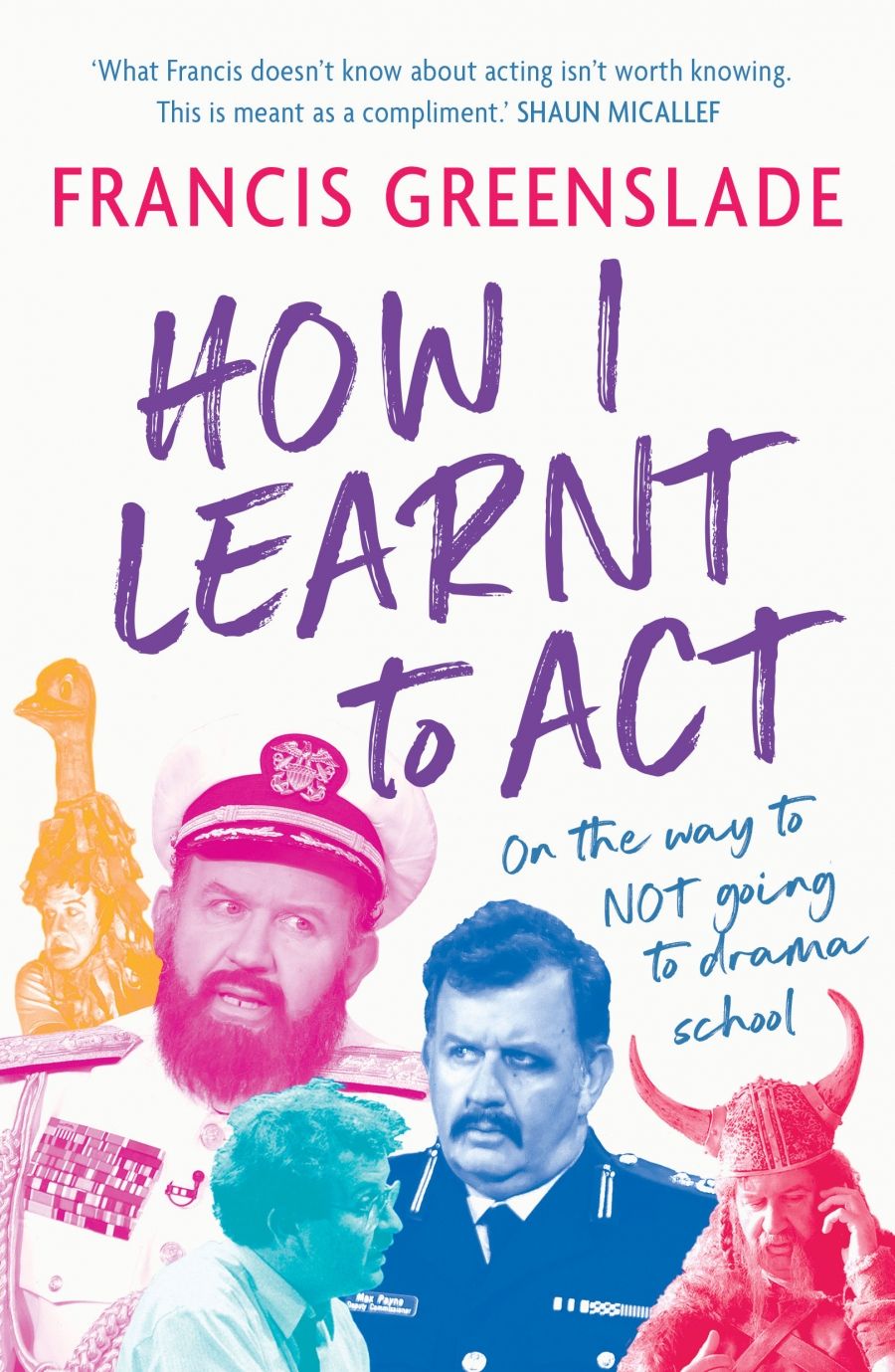
- Free Article: No
- Contents Category: Memoir
- Review Article: Yes
- Online Only: No
- Custom Highlight Text:
It’s perhaps a dubious thought, but the life of an actor invariably triggers something prurient in the audience, some desperate need to peer past the mask, to see beyond the curtain. Books by and about actors indulge this prurience, whether or not they are intended to. Works like Konstantin Stanislavski’s An Actor Prepares (1936) or Stella Adler’s The Art of Acting (2000) deal academically with the interiority and motivations of acting, but they still offer a glimpse into the process and the perceived trickery of creation. The most fun are the intentionally salacious ones, like David Niven’s The Moon’s a Balloon (1971) or Scotty Bowers’s Full Service (2017), which detailed the sexual proclivities of Hollywood’s closeted élite. Anything to get us closer, to get us into the inner sanctum.
- Grid Image (300px * 250px):

- Book 1 Title: How I Learnt to Act
- Book 1 Subtitle: On the way to not going to drama school
- Book 1 Biblio: Currency Press, $29.99 pb, 192 pp
Australian actor Francis Greenslade contributes to the genre in a minor key with How I Learnt to Act, a dual-purpose work that throws some autobiographical light on what is often referred to as a ‘jobbing actor’s’ career, while offering some sage advice to his fellow thespians. It’s not particularly titillating, and it’s hardly the kind of actor’s bible up-and-comers will cling ferociously to, but, like most books on acting, it has its pleasures and moments of genuine insight. In some ways, the book is the very antithesis of Year of the King (1985), Antony Sher’s extraordinary diary of his preparations for the Royal Shakespeare Company’s Richard III. How I Learnt to Act is a work that punctures the balloon of self-regard, that concentrates on what it’s like to act for a living.
In this regard, Greenslade is the perfect guide. Best known for his work with comedian Shaun Micallef, currently on ABC’s Mad as Hell, Greenslade has worked in every medium in a career that spans decades, from long-running serialised dramas to mainstage productions for the state theatre companies. He has worked with major directors such as Simon Phillips and Michael Kantor, and acted beside such luminaries as Julie Forsyth and Pamela Rabe. Most unusually, in an industry where the vast majority of actors are out of work at any given moment, he’s been almost consistently employed.
It gives him a perspective that tilts towards the utilitarian: never smug or self-aggrandising, he prefers to underplay that sense of desperation or profound need that drives most actors. The book is structured as a journey from blundering amateurism, through professionalism towards a kind of reluctant pedagogy, but it is difficult to shake the feeling that Greenslade would have just as happily become a mechanic or science teacher as an actor. If it’s proof that the acting profession is made up of all types, it’s also mildly deflating; no one wants to find a mechanic behind the mask. Yet this perspective, that sees creative endeavour as a work practice that can be honed and sharpened merely by time and effort, is also necessary, even slightly subversive, in an age that still believes in the Promethean spark.
How I Learnt to Act is made up of short chapters with titles such as ‘Prince of Numbskulls’, ‘Moving’, and ‘Status’; they refer to the show Greenslade is in at the time, to a biographical upheaval, and in some cases, to an acting lesson. These latter sections won’t challenge the history of performance in any way, and are standard concepts familiar to high-school drama students, but they are worth repeating, and Greenslade’s pragmatic approach gives them a rough-hewn force. His take on the difference between dramatic and comic acting – namely, that there isn’t one – is substantiated by examples from his own successes and failures, from his realisation that ‘if you don’t approach comic texts in the same way you approach non-comic texts, then you won’t engage the audience’.
Greenslade is refreshingly honest about his own inadequacies as a performer, and uses these to demonstrate truisms of the craft. He talks about the power of stillness on stage, and how his own tendency to shuffle his feet during a production of David Williamson’s The Club weakened the part. He speaks of the strange disconnect that can occur when an actor feels that he or she has failed to hit a certain emotion, only to be told by an audience member or fellow performer that it was ‘the best you’ve ever done it’. There is a beautiful sense of the craftsman who knows he can never perfect his craft, the idea that there is always something to learn, unlearn, and learn again. Only recently, in a production of The Odd Couple for the Melbourne Theatre Company, Greenslade realised that ‘the audience wanted to like me. And I didn’t need to be scared of them (which I had been ever since Grade 2, if I’m honest with myself).’
The subtitle to How I Learnt to Act is ‘On the way to NOT going to drama school’, which hints at some ambivalence around traditional avenues to the profession, and perhaps a touch of self-doubt. One hilarious chapter deals with reviewers, and singles out The Australian’s Chris Boyd for what Greenslade perceives as a preconceived bias (it’s lucky Greenslade stopped reading reviews before he got to mine). These moments of vulnerability – including a particularly touching chapter on the death of his infant son, Sam – are beautiful reminders that even our most successful actors live their lives on the edge of fragility. This book might be a rather quotidian peek behind the mask, but it is no less revealing for that.


Comments powered by CComment